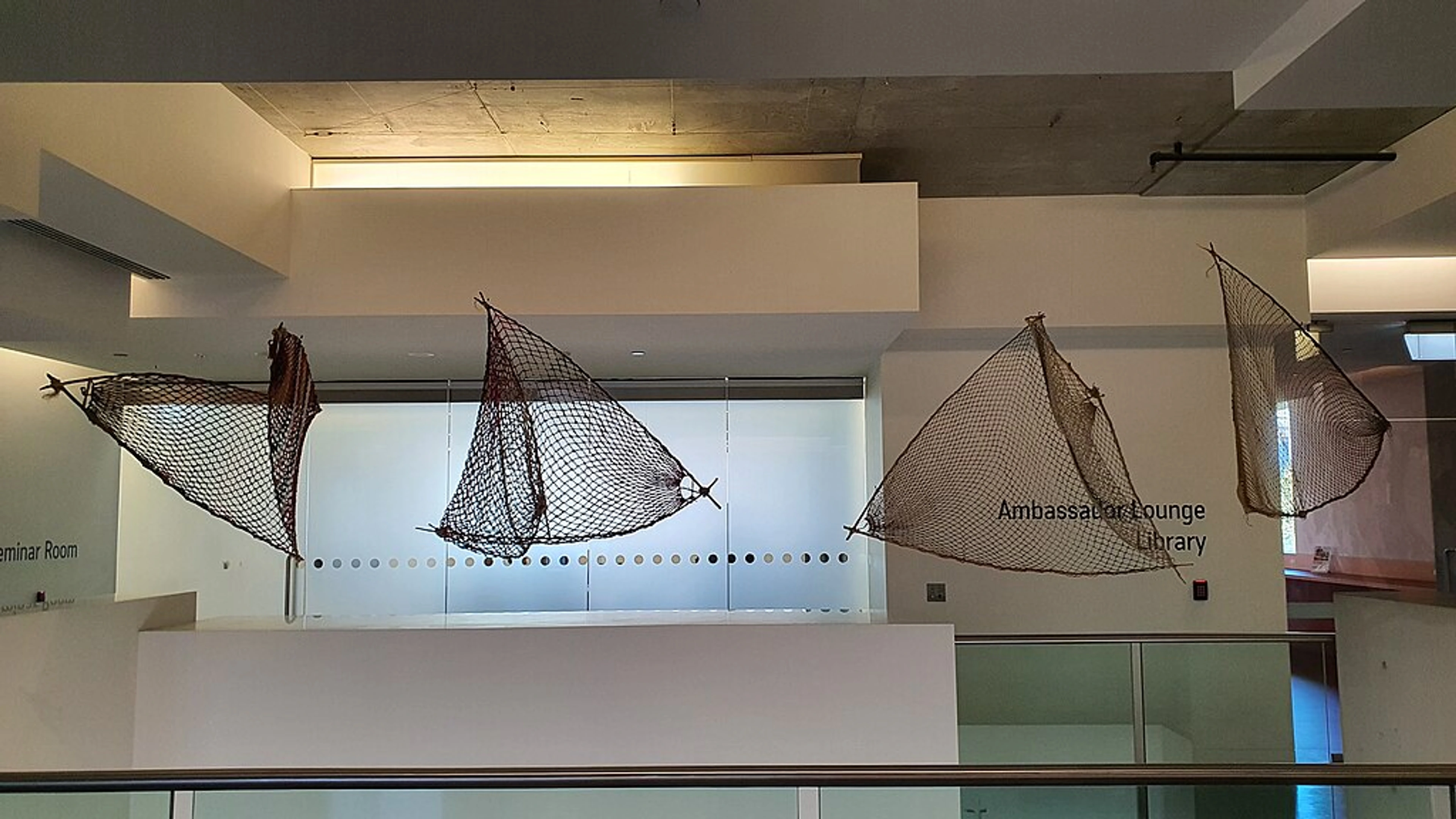
Art for Minimalist Interiors: Adding Soul Without Clutter
Discover how to intentionally integrate art into minimalist interiors. Explore styles, scale, placement, and historical context to add soul without clutter, guided by an artist's personal journey.
Art for Minimalist Interiors: Adding Soul Without Adding Clutter
Minimalism. Ah, the clean lines, the serene spaces, the blissful lack of clutter. It's a philosophy that speaks to a part of me that craves calm amidst the chaos of, well, being an artist. My studio? Let's just say it's less 'minimalist sanctuary' and more 'organized explosion of creative energy' (read: paint everywhere). Seriously, sometimes I look at my workspace and wonder if the paint splatters have achieved sentience. But my living space? That's where I try to breathe. For a long time, I wrestled with the idea: does art even belong in a truly minimalist interior? Isn't the point to strip everything back? This article is my journey through that question, and a guide to help you thoughtfully integrate art into your own pared-back space, adding soul without adding visual noise.
I used to think maybe it didn't belong. Maybe a blank wall was the ultimate minimalist statement. But then I realized something crucial: minimalism isn't about nothing. It's about intentionality. It's about removing the superfluous to highlight the essential. And what's more essential to a space than something that speaks to your soul, sparks conversation, or simply brings you joy? That's where art comes in. It's the carefully chosen note in the silence, the splash of unexpected color that makes the neutrals sing. It's the personal touch that transforms a stark space into a sanctuary. It's about curating your environment to reflect your inner world, choosing pieces that resonate deeply and make the silence meaningful. It's not just decorating; it's living intentionally with beauty.
Why Art Isn't a Minimalist Contradiction: Intentionality is Key
Minimalism, at its heart, is about making conscious choices about what you allow into your space. It's about valuing quality over quantity, purpose over possession. Seen through this lens, art isn't a contradiction at all. It's the ultimate expression of intentionality. Instead of filling walls randomly, you select pieces that hold meaning, evoke feeling, or serve a specific purpose, allowing them to stand out and resonate more deeply in the quietness of a minimalist setting. Think of a minimalist room as a beautifully composed piece of music with a lot of silence. The silence isn't empty; it makes the notes that are played resonate more deeply. Art in a minimalist space works the same way. It's not about filling every wall; it's about choosing a few, or even just one, piece that holds immense power and meaning. It's about adding soul without adding clutter.
The Power of a Single, Striking Piece
A single, carefully chosen artwork can become the focal point of an entire room. It draws the eye, provides a splash of personality or color, and anchors the space without overwhelming it. It's a confident statement that says, "This is what matters here." I've seen rooms transformed by just one large abstract painting or a compelling photograph. It's like the room takes a deep breath and says, "Okay, I'm ready now."
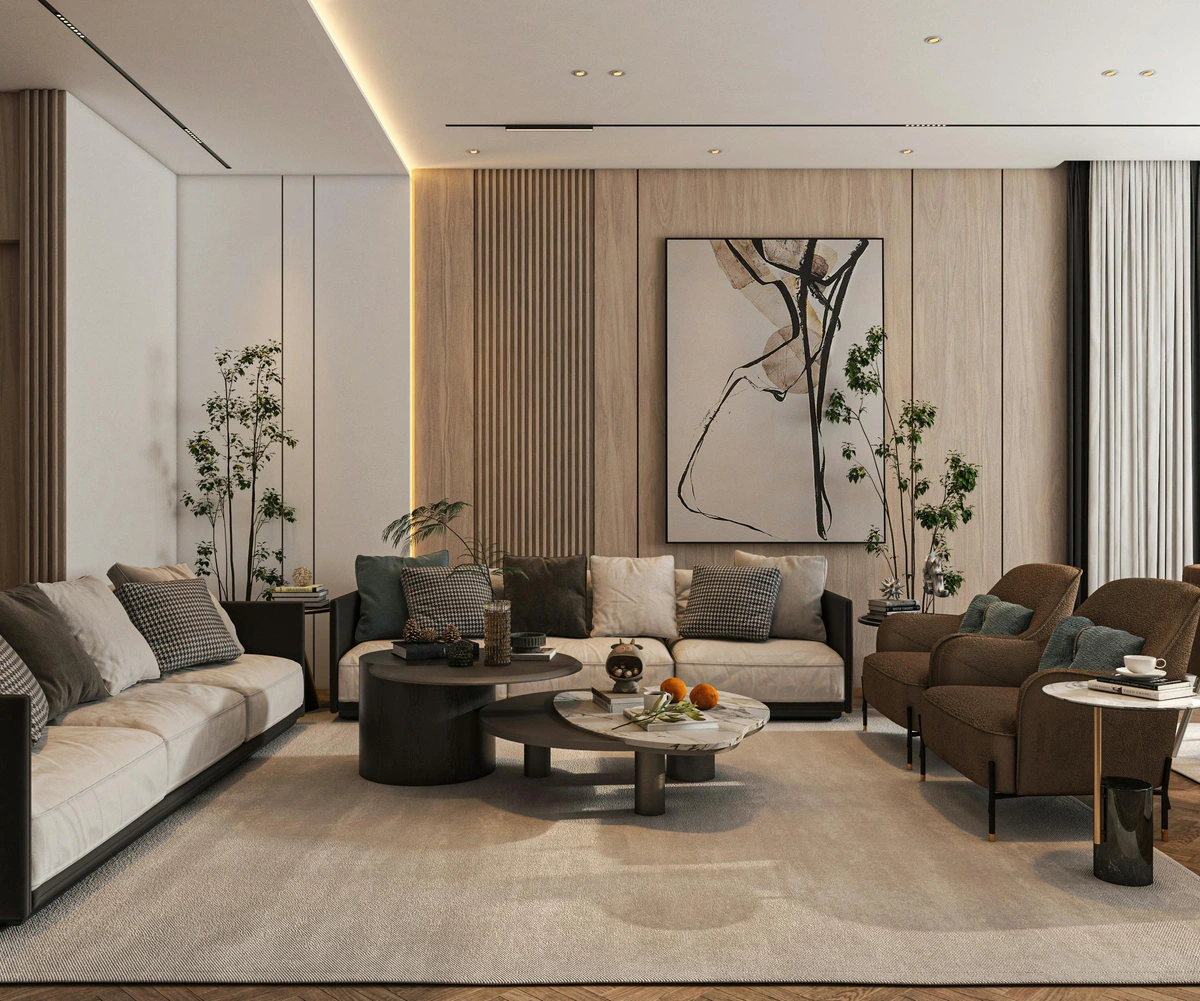
Art as a Statement of Self
Minimalism can sometimes feel a bit... impersonal, right? Like a hotel room, albeit a very stylish one. Art is your chance to inject you into the space. It's a window into your taste, your passions, your story. In a minimalist setting where distractions are few, the art you choose speaks volumes. It's not just decoration; it's dialogue. It's the personal touch that makes a house a home, even when that home is pared back to the essentials. It's about letting your personality shine through the quietness.
Art Can Serve a Functional Purpose
Beyond aesthetics, art can subtly enhance the function and feel of a minimalist space. A large textile piece can help with acoustics in a room with hard surfaces. A strategically placed sculpture can define a zone without needing a wall or screen. But it goes deeper. Art can profoundly influence the mood of a room, creating a sense of calm, energy, or contemplation. A piece chosen for its serene qualities can anchor a meditation space, providing a visual focus point. In larger open-plan minimalist homes, a striking artwork can even serve as a subtle wayfinding element, drawing the eye and guiding movement through the space. It's about choosing pieces that work with the space, not just in it, contributing to its overall purpose and feel. It can even subtly influence the perception of space – a piece with strong horizontal lines might make a wall feel wider, while a vertical piece can add a sense of height. It's about the art becoming an integral part of the room's design and experience. Consider a piece that cleverly hides an unsightly electrical panel or a mirror with an artistic frame that bounces light into a dark corner. I've seen artists incorporate shelving or even hidden storage into sculptural wall pieces, blending utility with aesthetic form in a truly minimalist spirit.
The Viewer's Experience: Art That Invites Connection
Minimalist art, and art in minimalist spaces, often emphasizes the viewer's interaction with the work and the surrounding environment. Think about how a piece changes depending on the light, your distance from it, or your mood. In a minimalist setting, there are fewer distractions, allowing you to truly see and feel the art. The quietness of the space amplifies the presence of the artwork, inviting deeper contemplation and a more profound connection. It's like the silence in music making the notes more powerful; the visual 'silence' of minimalism makes the art resonate more intensely. Choosing art for such a space means considering not just the piece itself, but the experience it creates for anyone in the room. Does it draw you closer to examine texture? Does it invite quiet reflection? Does it spark joy every time you glance at it? It's a quiet conversation between the art, the space, and the observer. Consider how the placement of a piece can guide someone through your home, creating moments of pause and contemplation, turning a simple hallway into a curated experience.
Historical & Philosophical Roots: Why Minimalism and Art Go Hand-in-Hand
Minimalism in interiors didn't just appear out of nowhere. It has deep roots in various art and design movements and philosophies that valued simplicity, form, and function. Understanding these influences helps explain why certain types of art feel so at home in a minimalist setting today. It's a lineage of thought that values clarity and essence, directly translating into the clean lines and intentionality of minimalist design.
Zen Aesthetics (Japan)
Drawing from Japanese philosophy, Zen aesthetics emphasize simplicity, naturalness, subtlety, and the beauty of emptiness (Ma). This philosophy deeply resonates with minimalist design principles. Art influenced by Zen, such as sumi-e ink painting (ink wash painting), calligraphy, or simple ceramic forms, can bring a profound sense of calm and balance to a minimalist interior, focusing on essence and negative space. It's about finding beauty in the understated and imperfect.
Bauhaus (1919-1933)
This German school championed the idea that form follows function, integrating art, craft, and technology. Bauhaus design emphasized clean lines, geometric shapes, and mass production, principles that are foundational to modern minimalist interiors. Art influenced by Bauhaus, focusing on basic forms and utility, fits seamlessly. Think of the clean lines and functional beauty that translated into iconic furniture and architectural styles still popular in minimalist homes today. Pieces that emphasize primary forms, industrial materials, or a blend of art and utility feel right at home.
De Stijl (1917-1931)
A Dutch art movement (hello, my roots!) led by artists like Piet Mondrian and Theo van Doesburg, De Stijl focused on basic geometric forms (squares, rectangles) and primary colors (red, blue, yellow) plus black, white, and gray. Their aim was universal harmony through pure abstraction. Art in this style, with its strict geometry and limited palette, is a natural partner for minimalist spaces, echoing architectural lines and adding controlled bursts of color. Their influence is seen not just in paintings but in furniture and architectural details. The grid structures and emphasis on pure form directly align with minimalist principles.
![]()
Minimalist Art Movement (1960s-1970s)
Artists like Donald Judd, Agnes Martin, and Sol LeWitt reacted against the emotional intensity of Abstract Expressionism, focusing instead on simple geometric forms, industrial materials, and the relationship between the artwork and the space it occupies. Their work is often characterized by repetition, grids, and a lack of expressive gesture. This movement directly informs the aesthetic of minimalist interiors, where the object itself and its presence in the space are paramount. Art from this era, or influenced by it, is the most obvious fit, emphasizing form, material, and spatial interaction. Pieces that explore the object's relationship to the surrounding architecture or the viewer's perception of space are particularly resonant.

Conceptual Art (mid-1960s onwards)
While not strictly minimalist in form, Conceptual Art often shares minimalism's focus on the idea or concept behind the work being more important than the finished object. This aligns with the minimalist emphasis on intentionality and meaning. A piece of conceptual art, which might be text-based or involve minimal physical presence, can fit perfectly into a minimalist space by adding intellectual depth without visual clutter. Imagine a simple text piece on a wall that prompts deep thought, or a minimal installation that highlights the architecture of the room itself. It's about the idea taking center stage, which resonates with the minimalist principle of stripping away the unnecessary.
Arte Povera (late 1960s)
This Italian movement used everyday, often 'poor' materials like soil, rags, and found objects. While seemingly opposite to sleek minimalism, Arte Povera shares a focus on the inherent qualities of materials and a rejection of traditional art conventions. Pieces from this movement, or influenced by it, can add a raw, textural, and thought-provoking element to a minimalist space, highlighting the beauty in simplicity and material honesty. It's about finding richness in the humble and the authentic, a concept that can ground a minimalist interior.
Choosing the Right Art: Intentionality, Style, and Substance
Okay, so you're convinced. Art has a place. But how do you choose art that complements, rather than clashes with, your minimalist aesthetic? This is where the fun (and sometimes the agony) begins. It's a bit like trying to pick the perfect single ingredient for a dish – it has to be just right. The key, as I mentioned earlier, is intentionality. Every piece should be chosen with purpose, adding value and meaning to the space, not just filling a void. It should resonate with you and the atmosphere you want to cultivate. It's about finding pieces that feel essential, not just decorative.
Color Palette: Harmony or Intentional Contrast?
Minimalist interiors often lean towards neutral palettes – whites, grays, blacks, natural wood tones. Your art can either harmonize with this or provide a deliberate, impactful contrast. The choice depends on the mood you want to create.
- Harmony: Choose pieces with muted tones, subtle variations in color, or monochromatic schemes. Think soft abstracts, black and white photography, or delicate line drawings. This approach enhances the serene, calming vibe. It allows the art to blend seamlessly, adding depth without demanding attention. It's about creating a quiet visual conversation.
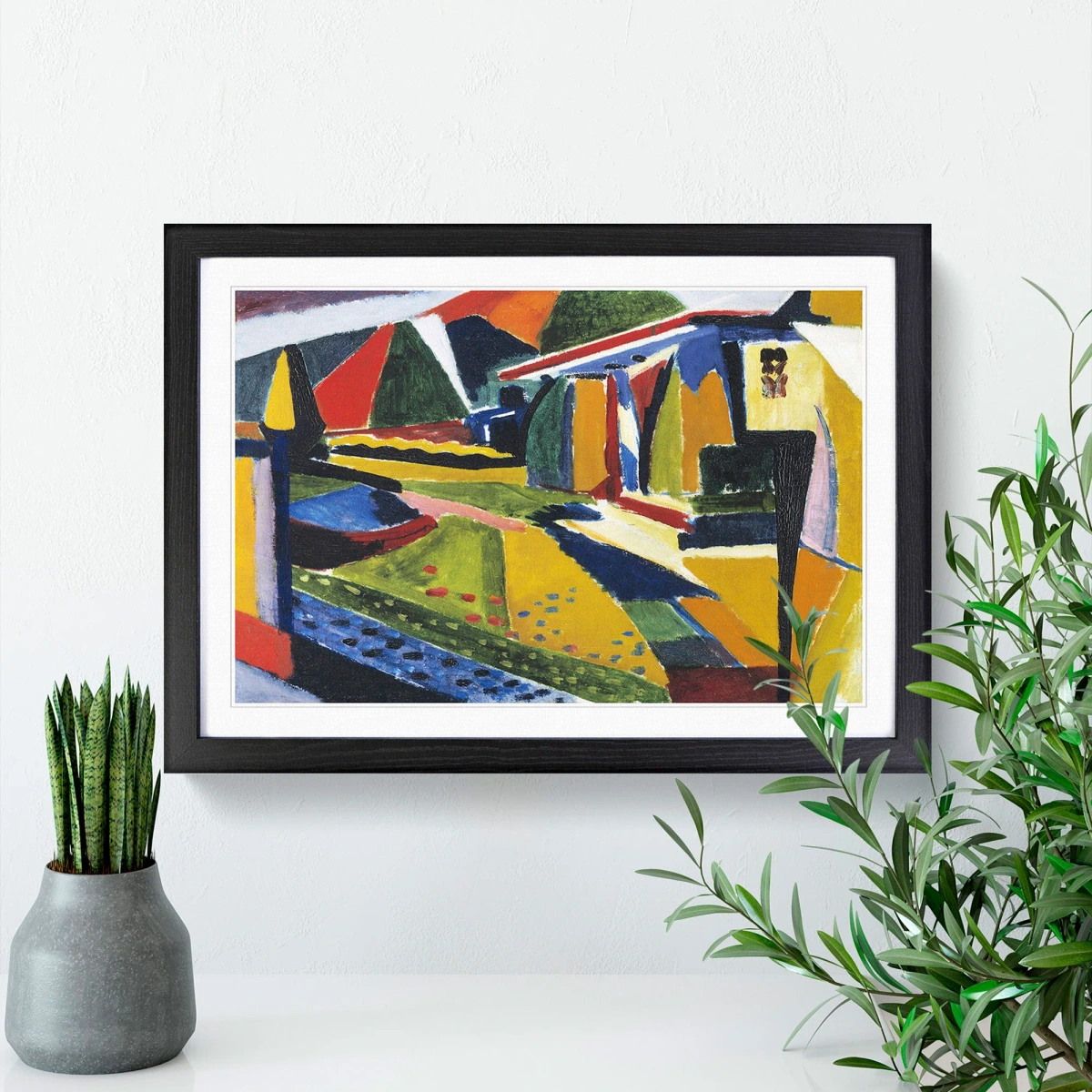
- Contrast: A single piece with bold, vibrant colors can be incredibly effective. It pops against the neutral background and becomes an instant focal point. Just make sure the colors feel intentional and not random. I often think about how artists use color – understanding color theory can really help you make a powerful choice here. Or consider choosing art based on room color for a more integrated feel. A carefully placed burst of color can energize a minimalist space in a way little else can. It's like a carefully placed exclamation point in a quiet sentence.
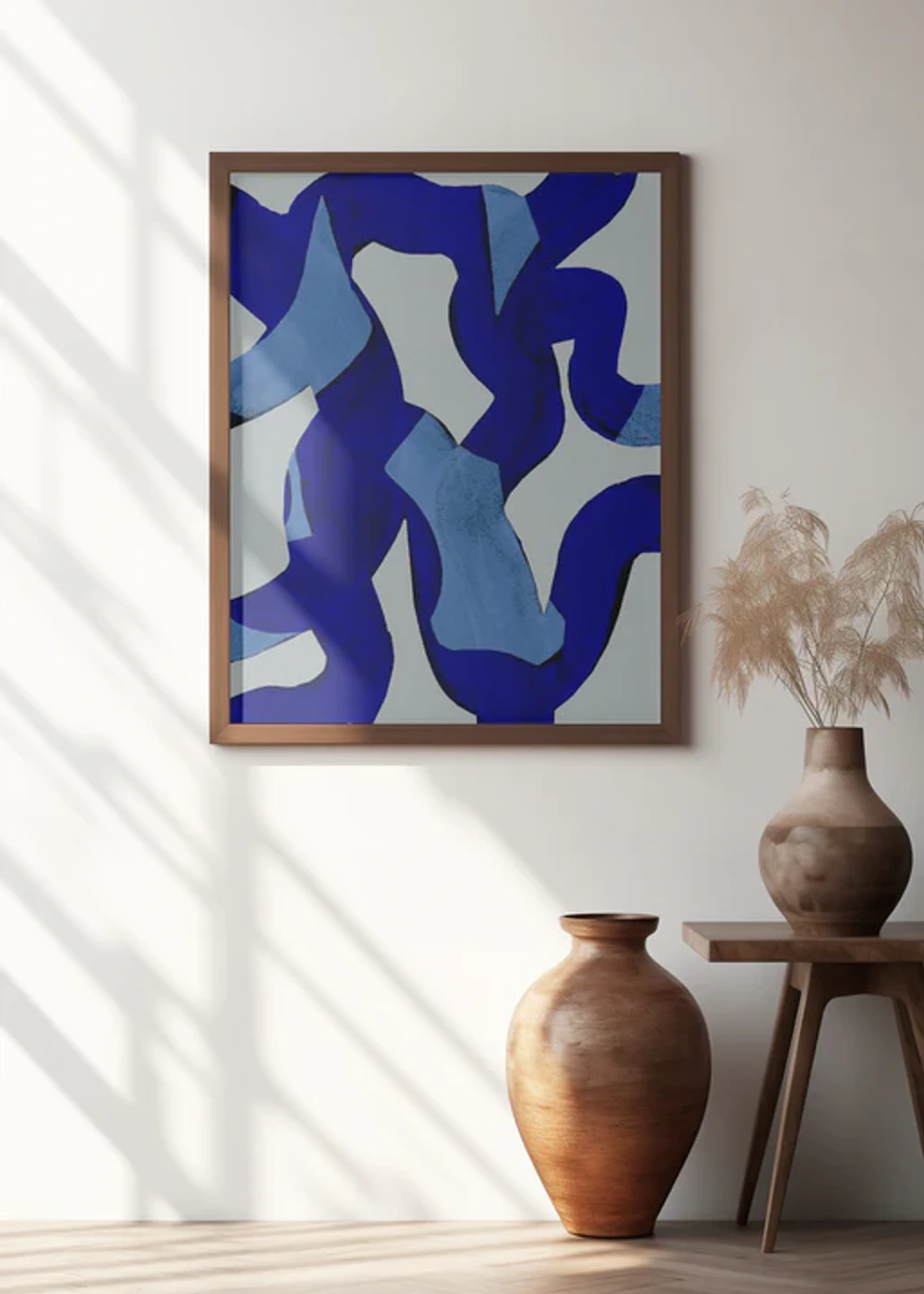
Subject Matter & Style: Finding the Right Fit
While abstract and figurative art are common choices, the minimalist aesthetic lends itself well to specific styles that emphasize form, line, and intentionality. Here are a few that often work beautifully:
- Abstract Art: Often feels like a natural fit because it focuses on form, color, and texture rather than narrative. It complements the clean aesthetic without introducing visual 'noise'. If you're curious about how to abstract art, you'll know it's about distilling essence. Exploring famous abstract art or delving into what makes abstract art compelling can open your eyes to the possibilities. Artists like Agnes Martin (known for her subtle grid paintings that emphasize structure and quiet contemplation) or Mark Rothko (as seen in the FAQ, with his contemplative color fields that invite deep emotional response) exemplify abstract art that fits a minimalist mood.
- Figurative Art: Can also work, but often benefits from simplicity in composition or a focus on form over intricate detail. A minimalist portrait or a simple landscape can add a human or natural element without feeling cluttered. Think clean lines, limited palettes, or a strong focus on shape.
- Geometric Abstraction: This style, with its emphasis on clean lines, shapes, and often limited color palettes, is a perfect partner for minimalist design. It echoes the architectural lines of the space and adds visual interest through form rather than complexity. Think Sol LeWitt's wall drawings (which interact directly with the architecture) or the work of artists influenced by De Stijl. It's about visual order and harmony.
- Line Art: Simple, elegant line drawings or etchings can add a delicate touch without overwhelming the space. They provide detail and form using minimal means, aligning perfectly with the 'less is more' principle. Consider printmaking techniques like etching or lithography, which often feature strong lines and limited palettes. It's the essence of form captured with minimal fuss.
- Minimalist Photography: Black and white or color photography with strong composition, negative space, and often abstract or simplified subjects can be incredibly impactful. It captures moments or forms with clarity and intention. Photographers like Hiroshi Sugimoto, known for his serene seascapes and theaters, embody this approach. Look for architectural photography, minimalist landscapes, or abstract close-ups. It's about finding beauty in simplicity and light.
- Sculpture & 3D Art: Don't limit yourself to walls! A single, striking sculpture (types of artwork), ceramic piece, or glass object can add texture, form, and a sense of presence. Look for pieces with clean lines and intentional form. Consider materials like metal, wood, ceramic, or glass. Even kinetic sculptures, with their subtle movement, can add a dynamic yet calming element. The work of Donald Judd, focusing on simple, repeated forms and materials, is a prime example of minimalist sculpture that interacts powerfully with space. Think also of contemporary ceramicists creating simple, elegant forms. These pieces occupy space in a deliberate way, adding a physical anchor.
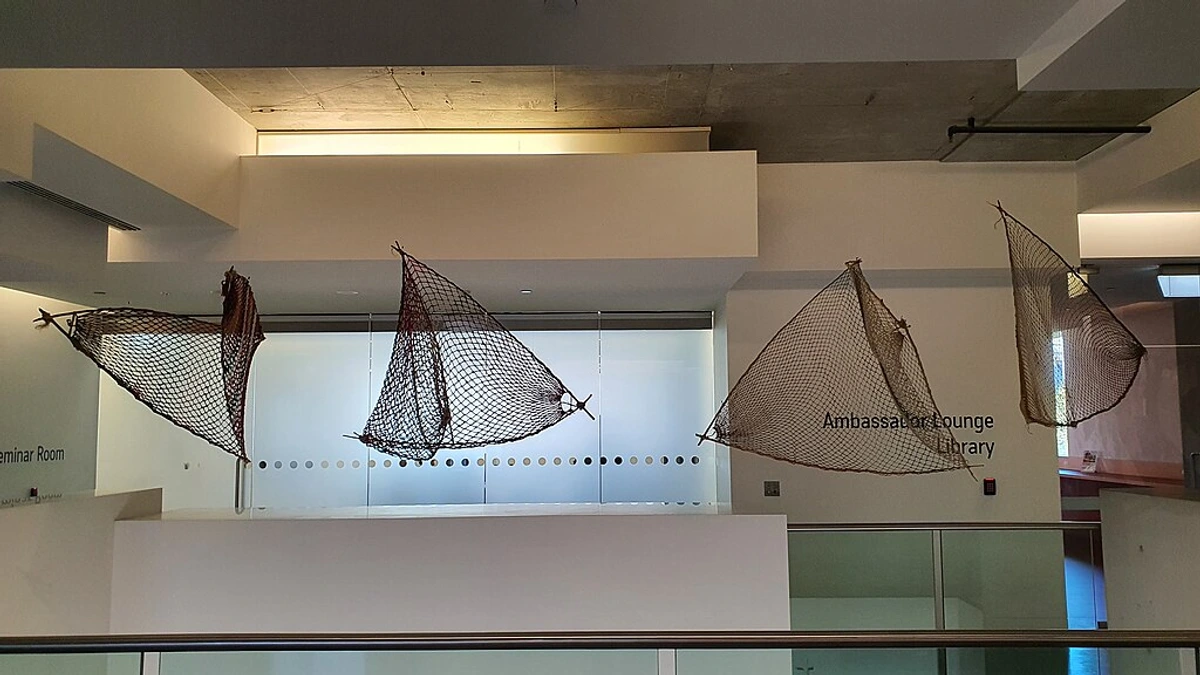
- Digital Art: Displayed on a high-quality screen, digital art can offer dynamic visuals that fit a modern minimalist aesthetic. Choose pieces with clean lines or abstract forms. The ability to change the displayed art easily can also fit the minimalist principle of not accumulating physical objects. It's a way to introduce variety without physical clutter, though integrating the screen itself seamlessly is key.
- Text-Based Art: Art that uses words or phrases as its primary element can be incredibly powerful in a minimalist space. It adds intellectual depth and a direct message without requiring complex imagery. Think of artists like Barbara Kruger (though her style is often bold and graphic, the concept of using text is relevant) or more subtle text pieces. The focus is on the message and its presentation, often with minimal visual distraction. It's art that makes you think, not just look.
Ultimately, it comes down to personal taste and what resonates with you. The art should feel like a natural, essential part of the space, not an afterthought.
Texture and Medium: Adding Subtle Interest
Minimalism isn't just flat surfaces. Introducing different textures adds depth and warmth. Art can do this too. Consider a textured painting (like impasto, where paint is applied thickly), a piece of textile art (the rise of textile art in contemporary galleries), a sculpture, or a print on textured paper. These subtle variations can make a minimalist space feel richer and more inviting without adding visual clutter. I've always loved how different mediums can tell their own story – the raw canvas, the impasto brushstroke, the cool feel of metal, the rough grain of wood, the smooth finish of concrete, or the delicate surface of handmade paper. These material qualities add a tactile dimension that complements the minimalist focus on form and material honesty. Consider pieces made from concrete, plaster, or even recycled materials for an added layer of texture and meaning. It's about engaging the senses beyond just sight.
The Role of Negative Space
In minimalist design, negative space (the empty space around and between objects) is just as important as the objects themselves. This principle extends to art. When choosing art for a minimalist space, consider the negative space within the artwork – a composition with large areas of calm, uncluttered space can enhance the minimalist feel. Equally important is the negative space around the displayed art. Giving a piece ample room to breathe on a wall prevents it from feeling crowded and allows its form, color, or texture to stand out. It's the visual equivalent of silence in music, making the notes (the art) more impactful. It's the space that allows the art to truly sing.
Incorporating Vintage or Antique Art: A Touch of History
Just because a piece isn't strictly 'minimalist' in style doesn't mean it can't work. Thoughtfully incorporating a vintage or antique artwork can add history, warmth, and a layer of unexpected richness to a minimalist space. The key is intentionality and contrast. A single, ornate antique frame can become a focal point against a stark wall. A vintage portrait, a simple still life, or even a vintage map or botanical print can add a human or natural element without feeling cluttered. The contrast between the old and the new, the detailed and the simple, can be incredibly compelling. Ensure the piece is well-maintained (how to take care of your art) and given plenty of negative space so it feels curated, not cluttered. Consider pairing it with modern furniture or echoing a color from the artwork in a subtle room accent to create a cohesive look. It's about creating a dialogue between eras.
Art and Nature: A Harmonious Pairing
Minimalist interiors often embrace natural elements like wood, stone, and plants. Art can beautifully complement this. Consider pieces with organic forms, natural textures, or subjects inspired by landscapes or botanicals. Abstract art that evokes natural phenomena (like water, sky, or earth) can enhance the connection to the outdoors. Placing art near plants can create a visually dynamic vignette, where the living greenery interacts with the static artwork. It's about creating a dialogue between the curated interior and the natural world. Art that uses natural materials, like wood or stone, can also enhance this connection. It brings the outside in, subtly softening the clean lines.
The Story and Feeling: Adding Layers of Meaning
In a minimalist space, every object is amplified. This means the story behind the art, or the feeling it evokes, becomes even more significant. Choosing a piece because you connected with the artist's journey (my timeline), because it reminds you of a cherished memory, or because its creation process (my studio) resonates with you adds layers of meaning beyond the visual. Similarly, consider the mood the art creates. Does it bring a sense of calm, energy, contemplation, or joy? The right piece should enhance the desired atmosphere of your minimalist sanctuary. Choosing art based on the feeling you want to cultivate in a room – be it tranquility in a bedroom or inspiration in a home office – is just as important as considering its visual style. It's about creating an emotional resonance.
Scale and Proportion: The Goldilocks Principle
This is crucial. A tiny piece on a vast wall looks lost. A massive piece in a small nook feels overwhelming. In minimalism, scale is everything. A large, impactful piece on a key wall can define the space. As a general rule of thumb, the art should occupy about two-thirds of the width of the furniture below it (like a sofa or console table). For example, if your sofa is 90 inches wide, aim for art around 60 inches wide. For a blank wall without furniture, consider the overall volume and height of the room; the center of the artwork should ideally be at eye level for a standing viewer (around 57-60 inches or 145-152 cm from the floor). Think about the size of the wall, the furniture below it, and the overall volume of the room. It should feel 'just right'. Getting the scale wrong is a common pitfall, but getting it right makes the art sing. I remember once hanging a small piece on a large wall in my own space, and it just felt... lonely. Adjusting the scale made all the difference. You can also group smaller pieces intentionally – a grid layout or a linear arrangement can create a strong visual presence without looking cluttered, provided there is ample negative space around the grouping. Remember, this two-thirds rule is a guideline, not a strict law. Trust your eye and how the piece feels in the space.
Integrating & Living with Art in a Minimalist Home
Once you've found your piece(s), how you display them and live with them is just as important as the art itself in a minimalist setting. The display should enhance the art and the space, not detract from it. It's about creating a moment, a focal point, a quiet conversation.
Placement is Key: One Wall Wonder or Curated Collection?
In true minimalist style, often one key wall is designated for art. This creates a strong focal point. If you have multiple pieces, consider a very intentional, clean gallery wall. The key is symmetry, clean spacing, and a cohesive feel. Avoid haphazard arrangements. Think of it like arranging objects on a shelf – every item has its place and purpose. You can find great tips on how to decorate a wall that apply here. Remember, negative space around the art is just as important as the art itself; it allows the piece to breathe and stand out. Consider the view from other rooms in an open-plan space – how does the art draw the eye or create a visual anchor from a distance?
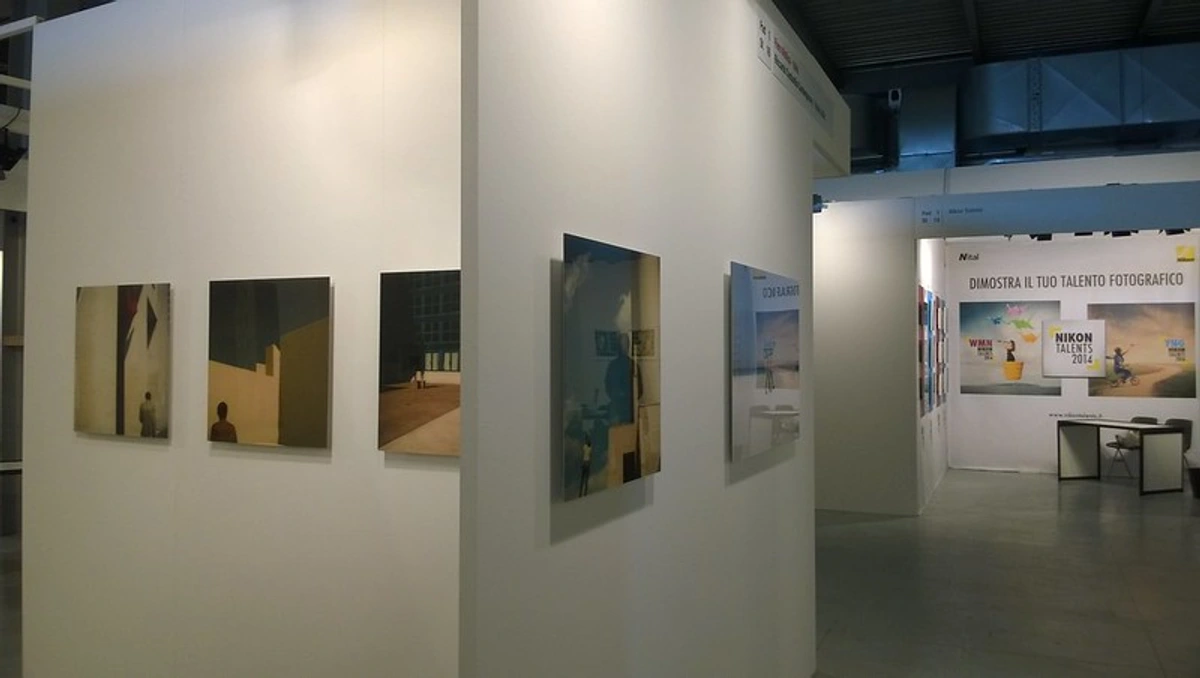
Room-Specific Considerations
While the core principles of intentionality and simplicity apply everywhere, the specific art choices and placement might vary slightly depending on the room's function and mood. Consider the purpose of the space when selecting and placing art, and also the quality and direction of light throughout the day:
- Living Room: Often the main focal point, this is where a large, impactful piece or a carefully curated gallery wall can make a strong statement. Consider art that sparks conversation or creates a desired atmosphere (calm, energetic). (How to decorate your living room)
- Bedroom: Aim for art that promotes relaxation and tranquility. Soft colors, abstract pieces, or serene landscapes can work well. Scale is still important, but the mood is paramount. (How to decorate your bedroom)
- Dining Area: Art here can be a conversation starter or simply add visual interest. Consider pieces that complement the dining experience without being too distracting. A single piece or a small series can work.
- Home Office: Art can provide inspiration or a sense of calm focus. Choose something that resonates personally and isn't overly busy. (How to decorate your office)
- Hallways & Entryways: These are great places for a single piece to make an initial impression or for a small, intentional collection. (How to decorate a wall)
- Kitchen/Bathroom: Even these functional spaces can benefit from art. Choose pieces that are appropriate for the environment (e.g., framed prints behind glass in a bathroom to protect from moisture). Consider materials that can withstand humidity. (How to decorate a kitchen, Art for bathroom)
Framing: Keep it Clean and Simple
Heavy, ornate frames usually clash with minimalism. Opt for simple, clean frames – thin black, white, natural wood, or even frameless options like acrylic mounts. The frame should protect and present the art without competing with it. Matting can add a clean border and help the art breathe within the frame. Learn more in the ultimate guide to framing your artwork. Consider the material of the frame itself – a sleek metal, a warm wood, or a simple gallery white can enhance the art and the minimalist aesthetic. The frame is the quiet support, not the star.
Lighting: Let it Shine (Subtly)
Good lighting is essential to make your art pop. In a minimalist space, this is even more important as the art is a key feature. Consider directional spotlights or picture lights to illuminate your chosen pieces. Natural light is also wonderful, but be mindful of protecting your art from sunlight. The right light can reveal textures and colors you might otherwise miss and can dramatically change the appearance and mood of a piece throughout the day. Think about how shadows play a role. Also, consider the color temperature of your lighting – warm light can make colors richer, while cool light can feel crisper, impacting the overall mood the art creates.
Installation Methods: Beyond the Nail
While traditional hanging is common, consider other installation methods that enhance the minimalist aesthetic. Floating frames create a sense of the artwork hovering slightly from the wall. Stand-off mounts for acrylic or metal prints offer a clean, modern look. For larger canvases, simply leaning them against a wall can provide a relaxed yet intentional feel, especially in a living room or studio space. Picture rails or cable hanging systems offer flexibility for rearranging or rotating art without creating multiple holes, aligning well with a desire for simplicity and adaptability. The method you choose should complement the art and the overall simplicity of the room. Temporary solutions like easels or even projecting digital art can offer flexibility without commitment.
Avoiding Clutter: The Golden Rule
This might seem obvious, but it's worth repeating. The area around your art should be free of clutter. No piles of mail on the console table below, no busy patterns right next to it. Let the art have space to breathe. This reinforces the 'less is more' principle and allows the viewer to focus solely on the artwork. It's about creating a clear visual path to the piece.
Hanging Art Perfectly Straight
In a minimalist space, a crooked picture is a jarring distraction. Achieving that perfectly level hang is key. Use a level, measure twice (or three times!), and consider using two hooks or a wire system for stability, especially for larger pieces. There are also adhesive strips for lighter pieces if you want to avoid holes (hanging art without nails), but always check weight limits! The satisfaction of a perfectly hung piece in a clean space is immense.
Art and Other Elements
Consider how your chosen art interacts with other key elements in your minimalist space. Does a vibrant abstract piece complement the texture of a linen sofa? Does a simple line drawing enhance the clean lines of a modern lamp? How does a sculpture relate to the negative space around a plant? In minimalism, every element is visible and intentional, so ensure your art feels like a harmonious part of the curated whole, not an isolated addition. This is where the dialogue between art, furniture, lighting, and even plants truly happens. You might even consider how the art interacts with subtle sensory elements like a single, calming scent or quiet background music, reinforcing the overall atmosphere.
Maintenance and Care: Preserving Your Intentions
Living with art also means caring for it. In a minimalist home, where objects are few and valued, keeping your art in good condition is essential. This goes beyond protecting it from sunlight. Simple dusting, understanding the needs of different mediums (how to take care of your art, cleaning different types of art), and knowing when professional restoration might be needed (when to restore artwork) are all part of being an intentional art owner. Because art in a minimalist space is often a focal point with ample negative space, it might be more exposed to dust or environmental factors. Regular, gentle cleaning and mindful placement away from direct heat sources or high humidity areas are crucial. It's not fussy; it's simply respecting the piece and ensuring its longevity.
Rotating Your Collection
If you have more art than you can display at once (a common problem for artists like me!), consider rotating your pieces. This keeps your space feeling fresh and allows you to enjoy different works. Store pieces carefully and swap them out seasonally or whenever the mood strikes. It's a way to refresh your focal points without buying new things and keeps the space dynamic while still adhering to minimalist principles.
Curating Your Minimalist Collection Over Time
Building an art collection for a minimalist home is a journey, not a race. It's about thoughtful acquisition and curation. Don't feel pressured to fill every potential spot immediately. Live in your space, understand how you use it, and wait for pieces that truly speak to you. Consider starting with one significant piece that you absolutely love. Then, over time, add pieces that complement it in style, color, or feeling. Think of your collection as a carefully edited playlist – each track (or artwork) is chosen for a reason and contributes to the overall mood. This approach ensures every piece feels essential and cherished, rather than just acquired to fill a wall.
Quality Over Quantity & Sustainability
In the context of minimalism, the emphasis shifts from accumulating many things to owning fewer, higher-quality items. This applies beautifully to art. Investing in a few well-made, meaningful pieces – whether they are originals, limited edition prints, or high-quality objects – is more aligned with the minimalist philosophy than acquiring numerous mass-produced items. Furthermore, consider the sustainability of your art choices. Supporting local artists (buying art local artists), choosing pieces made with eco-friendly materials (eco-friendly art-materials-artists-using), or giving new life to vintage pieces aligns with a conscious, minimalist lifestyle. It adds another layer of intentionality to your collection.
Art as an Investment (Even in Minimalism)
While the primary motivation for choosing art in a minimalist space should be personal connection and aesthetic value, it's worth noting that thoughtful acquisition can also be a form of investment. Choosing quality pieces from reputable sources, understanding provenance, and caring for your art can mean that your curated collection holds or even increases in value over time. This aligns with the minimalist principle of owning fewer, more valuable items that stand the test of time, rather than disposable decor. It's not about turning your home into a gallery vault, but acknowledging that intentional choices can have long-term benefits, both personal and financial. Of course, always buy art because you love it first – any potential investment return is a bonus!
Where to Find Minimalist-Friendly Art
So, you're ready to find that perfect piece (or two). Where do you look? Finding art is a personal journey, and in a minimalist context, it's about finding pieces that truly resonate and earn their place.
- Galleries: Visit local galleries (local art galleries) or explore online platforms (buying art online). Look for artists whose style aligns with the minimalist aesthetic – clean lines, abstract forms, intentional use of color or negative space. Don't be afraid to ask gallery staff for recommendations based on your minimalist style.

- Artist Websites: Many artists sell directly from their own websites. This is a great way to connect with the creator and find unique pieces. (You can always check out my own work if you're curious!). Buying directly often feels more personal, which fits the intentionality of minimalism.
- Emerging Artists: Don't overlook emerging artists (how to identify emerging artists worth collecting). You can often find incredible, affordable pieces that are perfect for a minimalist space and support an artist's journey. Learn how to spot and buy art from emerging artists. This is a great way to find unique pieces that aren't mass-produced.
- Art Fairs & Open Studios: These events offer a chance to see a lot of art in one place and often interact directly with artists. It's a less intimidating way to explore and discover (visiting art fairs tips for buyers).
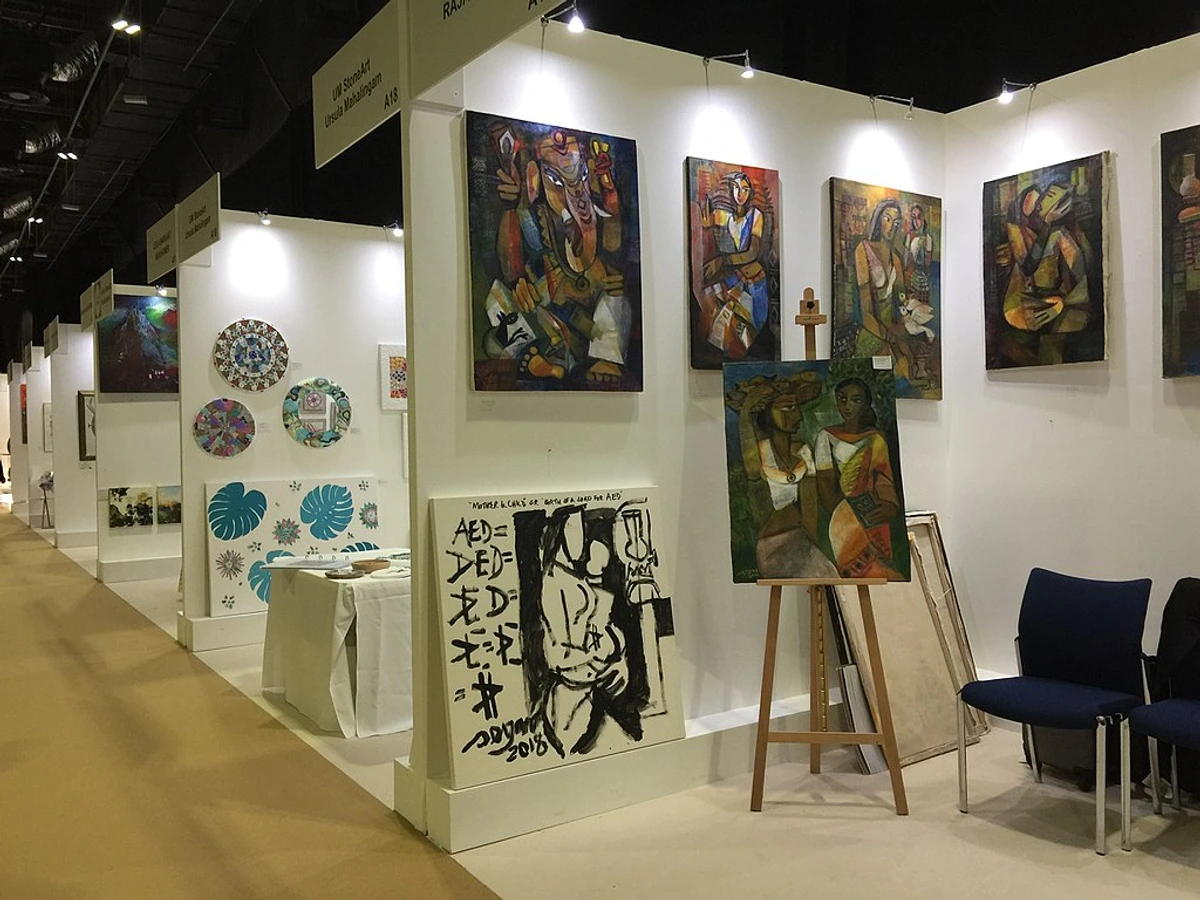
- Prints & Editions: Original art can be an investment (how much does original art actually cost), but high-quality prints (buying art prints) or limited editions (understanding limited edition prints) offer an accessible way to own beautiful art that fits your aesthetic and budget (buy art for less). Just ensure they are produced with quality materials.
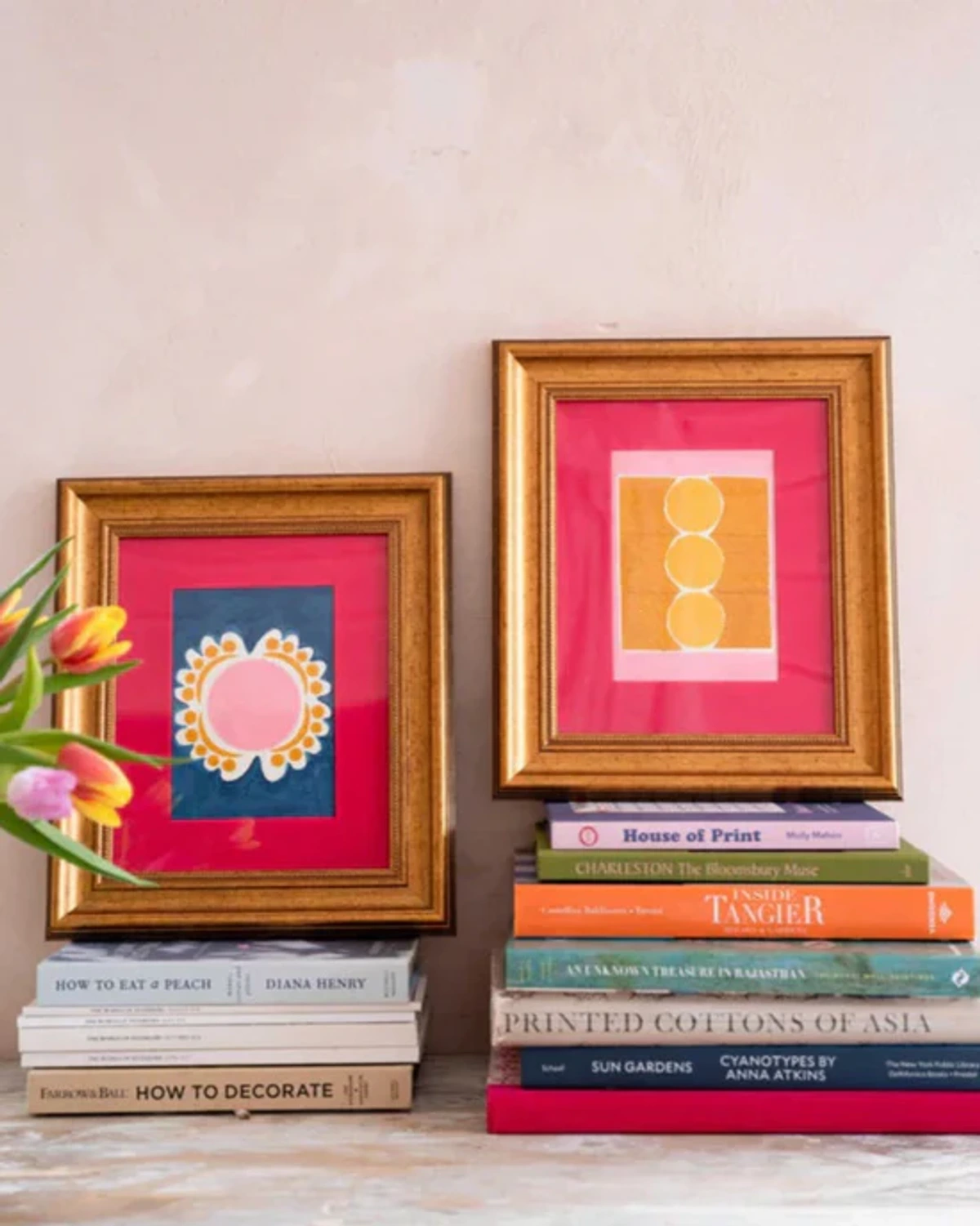
- Online Art Marketplaces: Beyond individual artist sites, platforms specifically curating contemporary or minimalist work can be a treasure trove. Look for sites that emphasize quality and offer good filtering options by style or medium.
- Commissioning Art: For a truly perfect fit, consider commissioning a piece (ultimate guide to commissioning a custom painting). This allows you to work with an artist to create something specific to your space, palette, and desired mood. It's the ultimate expression of intentionality.
- Estate Sales & Auctions: These can be unexpected sources for unique vintage or antique pieces that can add character and history to a minimalist space. Finding a hidden gem here requires patience and a good eye, but the reward is a truly one-of-a-kind piece.
- Consider Longevity: In a minimalist space, you want pieces you'll love for a long time. Take your time choosing. Does the piece still resonate after a few viewings? Does it feel timeless? Trust your gut. The piece that makes you feel something is the right one, regardless of whether it perfectly fits some arbitrary definition of 'minimalist art'.
Common Pitfalls to Avoid
Even with the best intentions, it's easy to make mistakes when adding art to a minimalist space. Here are a few common pitfalls I've seen (and maybe even made myself!):
- Too Many Small Pieces: A scattering of small items can quickly look cluttered and detract from the clean aesthetic. Solution: Focus on fewer, more impactful pieces, or group smaller pieces intentionally in a cohesive arrangement like a grid.
- Incorrect Scale: As mentioned, a piece that's too small gets lost, and one that's too large overwhelms. Solution: Pay close attention to the size of the wall and surrounding furniture, using the two-thirds rule as a starting point. Remember it's a guideline, not a law! Also, consider the height of the room and the piece's vertical presence.
- Cluttered Surroundings: The area around the art needs to be clear. Don't let mail, keys, or random objects pile up near your carefully chosen piece. Solution: Maintain clear surfaces and ample negative space around the artwork to allow it to breathe.
- Competing Styles: While mixing styles is possible, doing so without a unifying element (like color, theme, or framing) can create visual chaos. Solution: Ensure there's a cohesive thread, whether it's a consistent frame style, a shared color palette, or a thematic connection, if you choose to mix styles.
- Buying Just to Fill Space: This goes against the core principle of intentionality. Every piece should be chosen because you love it and it adds meaning, not just to fill a blank spot. Solution: Be patient. Wait for a piece that truly speaks to you and enhances the space's intended feeling.
- Ignoring Lighting: Placing a beautiful piece in a dark corner diminishes its impact. Solution: Consider how natural and artificial light interacts with the artwork at different times of day. Use spotlights or picture lights to highlight key pieces, and think about the color temperature of your bulbs.
- Neglecting Care: Art needs maintenance to last. Solution: Understand the specific care needs of your artwork's medium and material (how to take care of your art, cleaning different types of art). Regular, gentle cleaning and proper placement away from environmental hazards are key.
My Personal Take
For me, art in a minimalist space is like the punchline to a very elegant joke. The setup is clean, refined, and understated. The punchline (the art) delivers the impact, the emotion, the unexpected twist. It's the soul of the room. I love seeing how my own abstract pieces, with their layers of color and texture, can bring warmth and energy to a pared-back interior. It's a beautiful dialogue between simplicity and expression. It reminds me that even in the quietest spaces, there's room for a loud, beautiful thought. It's about curating your environment to reflect your inner world, choosing pieces that resonate deeply and make the silence meaningful. It's not just decorating; it's living intentionally with beauty. Go find the soul for your space.
FAQ: Art for Minimalist Interiors
Can minimalist art be colorful?
Absolutely! Minimalism in art often refers to the simplicity of form and composition, not necessarily the absence of color. Bold, saturated colors can be used in minimalist art, often in large blocks or simple geometric shapes, to create a powerful visual impact without being busy or cluttered. The key is intentionality and restraint in the overall composition. Think of Mark Rothko's color fields – intensely colorful, yet profoundly minimalist in form. This is discussed further in the section on Color Palette.

How many pieces of art should I have in a minimalist room?
There's no strict rule, but the 'less is more' principle applies. Often, one large, impactful piece is enough to define a room. In larger spaces or along a long wall, a carefully curated group of 2-3 pieces or a minimalist gallery wall with ample negative space can work. The goal is to avoid visual clutter, so err on the side of fewer, more significant pieces that you truly love. This is discussed in more detail in the section on Placement is Key.
What about sculptures or 3D art in minimalist interiors?
Sculptures and 3D art can be wonderful additions to a minimalist space, adding texture, form, and a sense of presence. A single, striking sculpture (types of artwork) on a pedestal or table can be a powerful focal point. Like paintings, choose pieces with clean lines and intentional form that complement the overall aesthetic without adding unnecessary visual complexity. Consider how the piece interacts with the space around it and the shadows it casts. You can find more on this in the section on Subject Matter & Style.

Can I use digital art in a minimalist space?
Absolutely! Digital art displayed on a high-quality screen can be a dynamic and modern addition. Choose pieces with minimalist aesthetics – clean lines, abstract forms, or simple compositions. The key is the display itself; opt for a screen that looks like a framed artwork when off, or integrate it seamlessly into the wall. The ability to change the displayed art easily can also fit the minimalist principle of not accumulating physical objects. This is also covered in the Subject Matter & Style section.
How do I start collecting art for a minimalist space if I have none?
Start small and focus on intentionality. Don't feel pressured to fill walls immediately. Begin by identifying the feeling or mood you want to create in your space. Research artists or styles that resonate with that feeling and the minimalist aesthetic (clean lines, thoughtful use of color/space). Consider starting with high-quality prints (buying art prints) or pieces from emerging artists (how to spot and buy art from emerging artists, starting an art collection on a budget). Visit local galleries (local art galleries) or explore online platforms (buying art online) to see what speaks to you. Remember, it's about finding pieces you truly love and that add meaning, not just decoration. Check out the section on Where to Find Minimalist-Friendly Art for more ideas.
Can I mix different art styles in a minimalist room?
Yes, but with intention and restraint. A minimalist space can handle a mix of styles if there's a unifying element – perhaps a consistent frame style, a shared color palette, or a shared theme (like abstraction or nature). A curated mix can add depth and personality. However, avoid too many disparate styles or pieces that compete for attention. The goal is harmony and focus, even with variety. The section on Common Pitfalls touches on this.
How does budget affect my choices for minimalist art?
Your budget definitely influences where you look, but it doesn't limit your ability to find impactful art. Original paintings or sculptures by established artists can be expensive (how much does original art actually cost), but high-quality prints (buying art prints), limited editions (understanding limited edition prints), pieces from emerging artists (how to spot and buy art from emerging artists), or even unique objects can be very affordable (buy art for less). Focus on finding pieces that resonate with you and fit the minimalist principles of intentionality and quality over quantity, regardless of price tag. The Where to Find section offers various options for different budgets.
How do I incorporate existing art that isn't strictly minimalist?
This is a common challenge! The key is thoughtful integration. Consider giving the non-minimalist piece its own dedicated space where it can be a focal point without competing with other elements. Use simple, minimalist framing to help it blend with the overall aesthetic. Ensure the surrounding area is kept exceptionally clean and free of clutter. Sometimes, placing a more complex piece in a very simple, neutral setting can actually highlight its beauty and detail. It's about creating a dialogue between the piece and the space, allowing the minimalist backdrop to emphasize the art's unique qualities. See the section on Incorporating Vintage or Antique Art for more.
Can I use plants with art in a minimalist space?
Absolutely, and they often complement each other beautifully! Plants add life, texture, and organic forms that can contrast nicely with the clean lines of minimalist art or architecture. Consider placing art near plants to create a visually interesting vignette. Choose art with natural themes or colors that complement your greenery. The section on Art and Nature explores this pairing.
How often should I rotate my art collection?
There's no set schedule – it's entirely up to you and how you feel in your space. Some people rotate seasonally, others do it when they acquire a new piece, or simply when they feel like a change. Rotating your art is a great way to keep your minimalist space feeling fresh and allows you to enjoy pieces you might not have room to display all the time. Just ensure you have a safe place to store the pieces that aren't on display. The section on Rotating Your Collection provides more on this.
What kind of art is best for a minimalist bedroom?
For a minimalist bedroom, the goal is often tranquility and calm. Consider art with soft, muted color palettes or monochromatic schemes. Abstract pieces that evoke a sense of peace, serene landscapes, or simple figurative works can work well. Avoid overly busy or dramatic pieces. The scale should be appropriate for the room, creating a focal point without overwhelming the restful atmosphere. Think about the mood you want to create when you wake up and when you go to sleep. The section on Room-Specific Considerations offers more ideas for different spaces.
Should I commission art for my minimalist home?
Commissioning art can be an excellent option for a minimalist home because it allows you to create a piece that is perfectly tailored to your space, aesthetic, and intentions. You can work with an artist to specify size, color palette, style, and even the feeling you want the piece to evoke. This ensures the artwork is not just decorative but a deeply personal and intentional addition to your minimalist sanctuary. It's an investment in a piece that is uniquely yours and fits seamlessly into your curated environment. Learn more in the Where to Find section.
Is abstract art the only type that works in a minimalist space?
Not at all! While abstract art is a popular choice due to its focus on form and color, many other styles can work beautifully. Figurative art, photography, sculpture, and even thoughtfully chosen vintage or antique pieces can complement a minimalist aesthetic if selected with intentionality and displayed with care. The key is the piece's ability to add meaning and visual interest without creating clutter or overwhelming the space. The section on Subject Matter & Style explores various suitable styles.
Is it okay to have no art in a minimalist space?
Minimalism is about intentionality, not emptiness. While a space can be minimalist without art, the question is whether that choice is intentional and serves the purpose of the space. If a blank wall truly brings you peace and feels complete, then yes, it's okay. However, for many, art is essential to adding personality, warmth, and meaning. The article argues that art, when chosen thoughtfully, enhances the minimalist ideal rather than detracting from it. It's about what feels essential to you.
How do I choose art for a minimalist rental space?
Choosing art for a rental minimalist space involves considering potential restrictions on hanging. Opt for pieces that can be displayed using temporary methods like adhesive strips (hanging art without nails), picture rails, or by simply leaning larger canvases against a wall. Focus on pieces that are impactful but potentially easier to move. High-quality prints or smaller sculptures can be great options. The principles of intentionality, scale, and style still apply, but practicality regarding installation is key.
How do I care for different types of art in a minimalist home?
Caring for art in a minimalist home follows the same principles as caring for art anywhere, but the focus on intentionality means each piece is likely highly valued. Understand the specific needs of the medium (oil, acrylic, photography, sculpture, etc.). Protect pieces from direct sunlight (protecting art from sunlight), extreme temperature fluctuations, and humidity. Gentle dusting is often sufficient, but know when professional cleaning or restoration (when to restore artwork) is necessary. The section on Maintenance and Care provides more detail.
Choosing art for a minimalist interior isn't about finding art that is 'minimalist' itself (though that works too!). It's about finding art that works in a minimalist context – pieces that are chosen with intention, displayed with care, and allowed to shine in the quiet space you've created. It's about adding soul without adding clutter. And that, to me, is the art of living minimally with maximum impact. It's a journey of finding what truly matters and giving it the space it deserves. It's about creating a space that feels both serene and deeply personal, a true reflection of your inner landscape.




